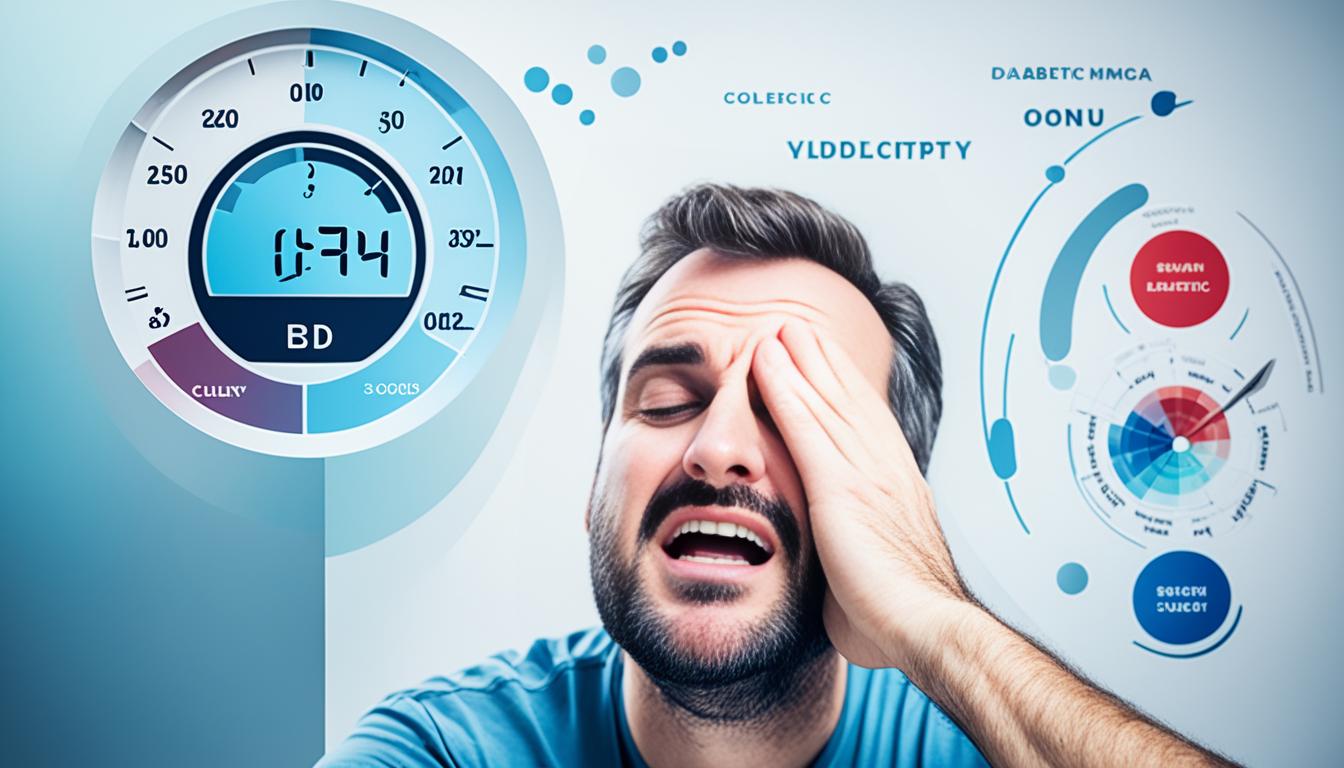Hypoglycemia, or low blood sugar, is when sugar levels in the blood drop too low. It’s especially risky for those with diabetes on insulin. Signs can be feeling hungry, tired, and shaky. You might sweat a lot, feel your heart racing, get dizzy, or feel sick. In very bad cases, you could even pass out or go into a coma.
Not eating enough, working out a lot, some meds, drinking alcohol, and liver/kidney issues can cause it. Even tumors or severe sicknesses can be a reason. Those with type 1 or type 2 diabetes and People needing insulin are more at risk. Learning to monitor and have a plan for low blood sugar is crucial to stay safe.
Stem cell therapy is a new area for managing diabetic hypoglycemia. It uses stem cells to create cells that make insulin. This process aims to help control blood sugar and improve how someone feels. While at first, scientists looked at embryonic stem cells, other stem cells types, like induced pluripotent stem cells (iPSCs), umbilical cord stem cells, and mesenchymal stem cells from bone marrow, offer hope too. Researchers are working hard to make stem cell therapy safe and efficient for diabetes treatment.
Key Takeaways:
- Hypoglycemia means low blood sugar and can be very serious.
- Common signs are feeling hungry, tired, shaky, sweating a lot, and feeling dizzy.
- Not eating enough, being very physically active, some medicines, drinking, and health issues can cause it.
- Those with diabetes using insulin face a higher risk of hypoglycemia.
- It’s key to watch your blood sugar levels and know what to do in an emergency to manage or avoid low blood sugar.
- There’s promise in stem cell therapy as a new way to treat diabetic hypoglycemia.
- Emerging types of stem cells, like iPSCs and MSCs, are showing potential in creating insulin-making cells.
Understanding Blood Sugar Regulation and the Role of Insulin in Diabetes
Blood sugar regulation is key to keeping our bodies energized. When we eat carbs, they turn into glucose in our blood. The pancreas then makes insulin. Insulin helps the cells take in glucose from the blood.
Any extra glucose gets stored as glycogen in the liver and muscles. When needed, the pancreas makes another hormone, glucagon. Glucagon turns glycogen back into glucose. This raises the blood sugar level when it’s too low.
People with type 2 diabetes have trouble because their cells don’t react to insulin well. So, they have high blood sugar. Type 1 diabetes happens when the body doesn’t make enough insulin because of damaged cells.
Tumors can also mess with blood sugar levels, like those in the pancreas. They can affect how the pancreas works, causing problems with insulin. This can lead to blood sugar imbalances and hypoglycemia risks.
It’s important to know how our bodies control blood sugar and the role of insulin. This knowledge is crucial for managing diabetes well and avoiding low blood sugar. Keeping blood sugar balanced is vital for health and happiness.
Advancements in Stem Cell Therapy for Diabetes
Stem cell therapy is showing promise for treating diabetes. It’s finding new ways to create insulin-making cells, though it once used embryonic stem cells. Now, it focuses on other types like iPSCs, umbilical cord cells, and MSCs from bone marrow. This shift is due to concerns over ethics and the danger of teratomas.
iPSCs come from adult cells and can turn into different types, including insulin-producing islet cells. This makes them a great option for treating diabetes. They also avoid ethical issues linked to embryonic stem cells.
MSCs, from places like umbilical cords and bone marrow, have also attracted attention. They could become beta cells and help with insulin while improving blood sugar. This could be a big step in diabetes care.
Scientists work to make how stem cells change into crucial cells better. They want to make using stem cells in diabetes care safer and more effective. Their goal is to make stem cell therapy a major player in fighting diabetes.
This table gives a look at the different stem cells used for treating diabetes:
| Type of Stem Cell | Source | Potential for Differentiation into Islet Cells | Advantages |
|---|---|---|---|
| Embryonic Stem Cells | Embryos | Yes | Potential to differentiate into various cell types |
| Induced Pluripotent Stem Cells (iPSCs) | Adult cells | Yes | Ethical considerations are addressed |
| Mesenchymal Stem Cells (MSCs) | Umbilical cords, bone marrow | Potential to differentiate into beta cells | Potential for improving glucose control |
These steps in stem cell therapy bring hope for making more insulin-making cells and controlling blood sugar better. Research continues to show that stem cell therapy might lead to new, effective ways to manage diabetes.
Conclusion
Stem cell therapy is making big strides in diabetes treatment. There are still ethical and research issues to face. But, this new method looks promising to help create insulin cells and better manage glucose.
The use of different stem cell types like induced pluripotent and mesenchymal cells is opening new doors. These are promising for treating diabetes differently.
It’s key to keep researching to make stem cell therapy for diabetes safer and more effective. Thanks to ongoing progress and trials, this therapy might truly help treat diabetes soon.
Stem cell therapy could change how we treat diabetes for the better. As experts keep studying it, there’s hope it will offer a brand new way to deal with diabetes. It might make life better for those with diabetes, improving how they manage the condition.

